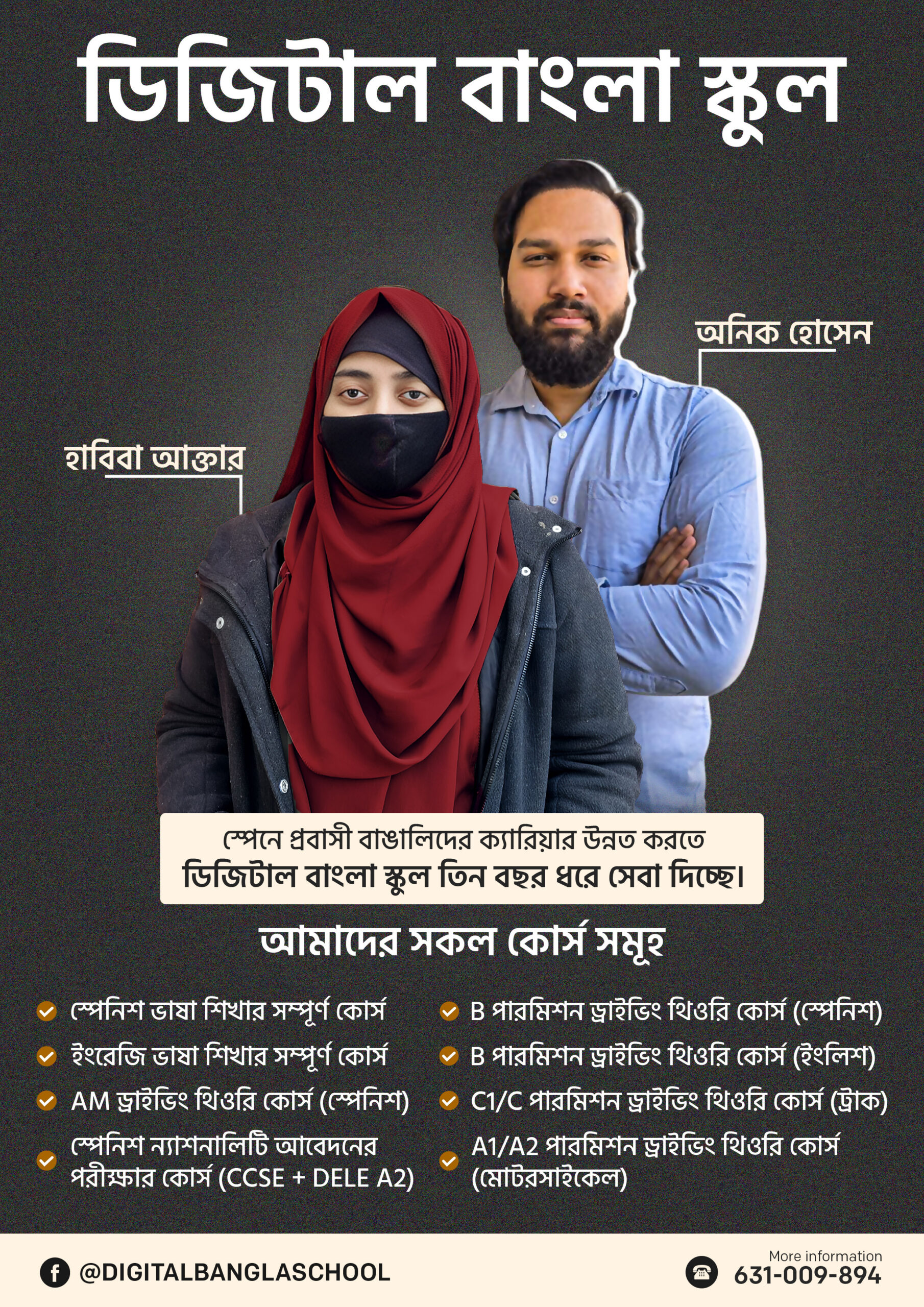If risk factors are reduced, we will avoid more accidents.
যদি দুর্ঘটনার ঝুঁকির কারণগুলি কমানো যায় তবে আমরা আরও দুর্ঘটনা এড়াতে পারব।
Who? Young people between ages 19 and 25 are the group with the most accidents.
কারা? ১৯ থেকে ২৫ বছর বয়সের যুবকদের মধ্যে সর্বাধিক দুর্ঘটনার হার বেশি।
Where? More deaths occur on interurban roads. On urban roads there are more accidents but without so many deaths due to low speed.
The safest roads are autopista and autovia. Accidents occur more on the straights road than on the curves.
কোথায়? শহরের বাহিরের রাস্তায় বেশি মৃত্যুর ঘটনা ঘটে। শহুরে রাস্তাগুলিতে ও বেশি দুর্ঘটনা ঘটে তবে কম গতির কারণে এত বেশি মারা যায় না।
সবচেয়ে নিরাপদ সড়কগুলি হল মোটরওয়ে এবং এক্সপ্রেসওয়ে। দূর্ঘটনা বাঁকের চেয়ে সোজা রাস্তায় বেশি হয়।
When? The summer, On vacation, weekend nights and early morning, during peak hours (leaving and entering work).
কখন? গ্রীষ্ম, ছুটির দিনে, সাপ্তাহিক ছুটির দিনে রাত এবং ভোরে, কাজের যাওয়ার সময়গুলিতে (কাজ ছেড়ে যাওয়া এবং প্রবেশ)।
Accidents produce a great human and economic cost (material, health and administrative).
যেকোন দুর্ঘটনা মনুষ্য এবং অর্থনৈতিক ব্যয় উত্পাদন করে (উপাদান, স্বাস্থ্য এবং প্রশাসনিক)।
The risk factors are: Humans, the vehicle, the road and its environment.
ঝুঁকির কারণগুলি হ’ল: মানুষ, গাড়ি, রাস্তা এবং এর পরিবেশ।
Human: Speed, psychophysical state, infractions… A pedestrian is considered a human factor.
মানব: গতি, সাইকোফিজিকাল অবস্থা, লঙ্ঘন … একজন পথচারীকে একটি মানবিক উপাদান হিসাবে বিবেচনা করা হয়।
Vehicle: It is usually due to poor vehicle maintenance.
যানবাহন: এটি সাধারণত যানবাহনের খারাপ রক্ষণাবেক্ষণের কারণে হয়।
Road factor and its surroundings: bad weather, road or signs.
রাস্তার ফ্যাক্টর এবং এর চারপাশ: খারাপ আবহাওয়া, রাস্তা বা চিহ্ন।
Speed is the main cause of accidents, since at higher speeds, the reaction and braking distance is increased, and the visual field is reduced.
গতি দুর্ঘটনার মূল কারণ, উচ্চ গতিতে, প্রতিক্রিয়া এবং ব্রেকিং দূরত্ব বৃদ্ধি পায় এবং দৃশ্য ক্ষেত্র হ্রাস পায়।













